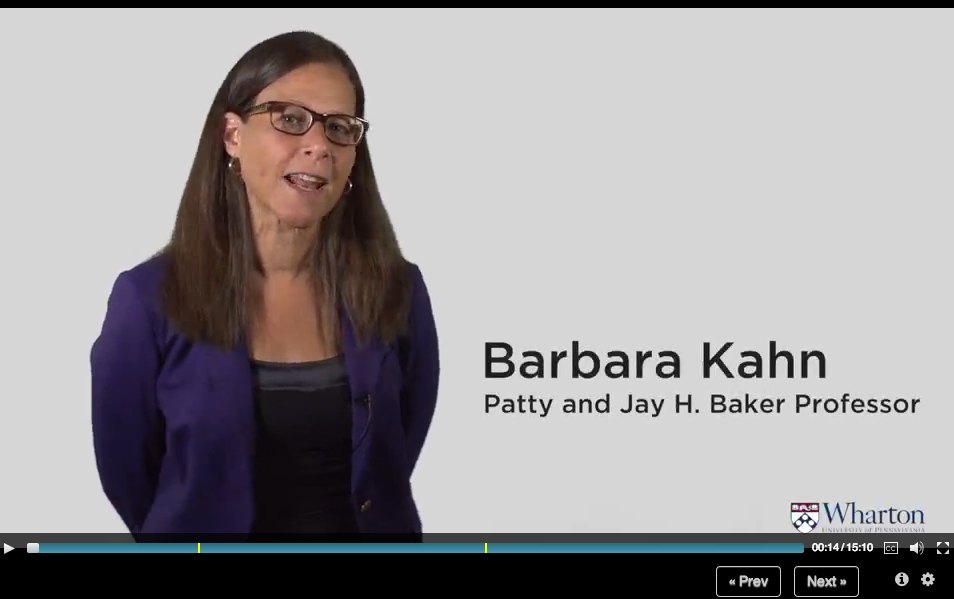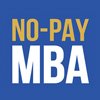by Laurie Pickard | Jun 1, 2014 | Thoughts on Higher Ed and Life
This post is the first in a series on the market for MOOC-based education.
 My husband the economist loves to forward me economic research papers about MOOCs and higher education. One of these papers, from the National Bureau of Economic Research (NBER) has really stuck with me as I try to make sense of what MOOCs mean for higher education. It’s called “The Economics of Online Post-Secondary Education: MOOCs, Nonselective Education, and Highly Selective Education.” You can find it here – but FYI, you won’t be able to access it unless you have a .gov email address or are willing to pay five dollars for it.
My husband the economist loves to forward me economic research papers about MOOCs and higher education. One of these papers, from the National Bureau of Economic Research (NBER) has really stuck with me as I try to make sense of what MOOCs mean for higher education. It’s called “The Economics of Online Post-Secondary Education: MOOCs, Nonselective Education, and Highly Selective Education.” You can find it here – but FYI, you won’t be able to access it unless you have a .gov email address or are willing to pay five dollars for it.
So let me summarize for you: in the paper, the author describes two markets for higher education – the selective market (think grassy quadrangles and philosophical debates among knowledge-hungry 18-to-22-year-olds) and the nonselective market (think students who work full time while studying, commuter campuses, and associates degrees). To participate in the selective market, would-be students have to go through a rigorous admissions process, while anyone with a high school diploma or equivalency can participate in nonselective higher education.
These two markets operate under vastly different business models. Selective higher education is mostly funded with huge endowments, secured by giving students such a wonderful college experience that they are inspired to give money to the school years after graduation. In this model, tuition doesn’t begin to cover the cost of educating students, but it doesn’t matter because the real money comes from alumni giving. The nonselective market is the opposite. Students pay a tuition that mostly covers the cost of educating them, with no expectation that they will give money to the institution in the future. To summarize, the selective market functions like a venture capital equity market – with students as the investment – while the nonselective market is a market for service provision.
And it isn’t just the revenue models that differ between these two higher education markets. At nonselective institutions, curricula are more standardized, many people are capable of competently teaching the material, interactions with professors are fewer, dropout rates are higher, attendance can be episodic, and graduation within four years is the exception to the rule. In contrast, at selective institutions, course content is original, only a small group of professors is able to teach the material – which often draws on the latest research, interactions with professors are ubiquitous, dropouts rates are low, most students attend full time, and the majority finish within four years.
Why is this important? It matters for understanding MOOCs’ potential for disruption. The author of the NBER paper, Caroline Hoxby, argues that MOOCs have the potential to be most disruptive for the nonselective market since many of their features – low completion rates, standardized material, low professor interaction, lack of admissions process – are characteristic of education in that market.
In a recent op-ed in the Boston Globe, Harvard Business School professor Clayton Christensen and researcher Michelle Weise make a related argument. By ignoring “vocational training” in favor of academic education, universities have allowed an opening for skills-based education, more tailored to the needs of employers. Given that 80% of college-goers do not attend traditional four-year colleges – and that even those who do graduate from four-year colleges have an increasingly difficult time finding employment – this market is potentially quite large.
While MOOC providers and others in the MOOC movement are still searching for viable business models, one thing is clear: the disruption is coming.
In this series of posts I reflect on the various segments of the market for MOOCs – the challenges they face, the solutions that already exist in the marketplace, and others that don’t yet exist but could. While many solutions are springing up on an almost daily basis, there is still ample space for innovation.
I’ll start with the market for nonselective higher education, and I want to leave you with a key word that defines the needs of this market segment.
That word is ACCESS.
Stay tuned for more on this topic.
by Laurie Pickard | May 24, 2014 | MOOC MBA Design, Thoughts on Higher Ed and Life

Recently, I’ve experienced a significant increase in the demands on my time. First, I’ve been busier at work. Second, I’ve taken on the job of managing the finances for the commissary at the US embassy in Kigali. Third, I’ve been revamping my site and have simultaneously been getting more requests for guest posts on other sites. And of course I haven’t stopped taking MBA courses. In fact, I am currently taking three MOOCs instead of my usual one to two. This jam-packed schedule has required some creative thinking on how to fit in course work on top of everything else, but I have been unwilling to drop any of my courses.
Here’s why I’m committed to sticking with all three courses and how I’m managing to fit everything in.
An Introduction to Marketing
Level of difficulty: Easy
Time per week: 2 hours
Strategy: Watch course videos and take quizzes in the evening after work
This course is part of Wharton’s foundation series; the others are Operations Management and Accounting, which I’ve already taken, and Corporate Finance, which I plan to take next time it’s offered. I’ve been impressed with the Wharton courses overall, and I’m committed to completing all four. Marketing is easier than the two other Wharton courses I’ve taken, but just as engaging. It is easy to fit it into my schedule, since the videos are entertaining enough to hold my attention even when I’m tired after work. In fact, my biggest complaint about this course so far is that the quizzes aren’t difficult enough – which, given my current scheduling constraints is probably not something I should be griping about.
Credit Risk Management
Level of difficulty: Difficult
Time per week: 4 hours
Strategy: One lesson or one problem set every day before work
Credit Risk Management is the course I should have dropped, but it’s my most difficult course, and I couldn’t bring myself to drop my hardest course twice in a row. Credit Risk Management covers how banks determine how much cash to keep in reserve, based on their borrowers’ risk of default. It’s given me some insight on how banking works, though it isn’t immediately obvious how I will apply any of this outside the classroom. Probably the most useful part of the course is that I’m learning R, a statistical analysis program, which I expect will come in handy next term, when I focus on data analysis.
This is one of those courses in which all assignments are due on the same day – the last day of the class. Which is great because it provides flexibility, but also terrible because it is too easy to fall behind. And the assignments are quite challenging to boot. To keep myself on track, I have started doing one short lesson or one problem set every morning before going to work.
Beyond Silicon Valley: Growing Entrepreneurship in Transitioning Economies
Level of difficulty: Moderate
Time per week: 2.5 hours
Strategy: Study at work – don’t worry, my boss knows!
Beyond Silicon Valley is the course that is most directly relevant to my work. I am an entrepreneurship specialist in a place that is quite far from Silicon Valley – both physically and in terms of the entrepreneurship landscape. This course discusses how governments, donors, anchor institutions, business incubators, and other players can create an ecosystem to support entrepreneurs. To make this course even more exciting, I’ve been in direct contact with the professor – no small feat in a course with thousands of enrollees from around the world. I’ve also been using this class as a laboratory for finding ways to engage more meaningfully through discussion forums. More on that in a future post.
Because the material in Beyond Silicon Valley is so obviously connected to my work – Rwanda is even used as an example! – I managed to get it included in my annual training plan. Which means that I can watch videos, post on forums, take quizzes, and write the required reflection journal entries during working hours. Score!
I’m hoping that some of these strategies might be helpful for others trying to squeeze online courses into a busy schedule. Feel free to post other methods you’ve come up with in the comments section of this post.
After these courses are done, I’m going on summer break!
by Laurie Pickard | May 2, 2014 | Most popular posts, Thoughts on Higher Ed and Life

Ladies, the numbers don’t look good. Though there isn’t much data specific to business courses, those studies that have been done on MOOC enrollment rates point to an overall trend of many more men than women taking advantage of free online courses. The numbers vary, but the story is largely similar. In one study of MOOC users, female students were 41% of the population; in another, they were only 36%. EdX recently released a profile of its users, only 29% of whom are women. As one article summarized the research, “students tend to be young, well-educated males who are trying to advance in their jobs.”
I started thinking about this topic when I clicked on the first video lecture for Wharton’s Introduction to Marketing and found myself surprised to see a female professor. I’m not sure why it didn’t occur to me before that moment, but I realized that almost all of my MOOC professors have been men. I did one short course on human resources taught by a woman, and there were a couple of brief units taught by women in my course on international organizations management, but the vast majority of my courses so far have been taught by men. This got me thinking about women’s participation in MOOCs, both as students and as professors.
Though I didn’t find any formal research, preliminary evidence suggests that the stats among MOOC professors are even worse than those among MOOC students. Out of curiosity, I conducted my own informal survey of Coursera’s Business and Management course offerings. The 62 courses I found included the following:
| Business courses taught by one man |
42
|
| Business courses taught by two or more men |
11
|
| Business courses taught by mixed gender groups |
8
|
| Business courses taught by one woman |
1
|
| Business courses taught by a group of women |
0
|
So there you have it. Women are under-represented in business MOOCs, just as they are in business school generally.
Now that I’ve shared these disheartening statistics, let me tell you why I’m optimistic about the potential of business MOOCs to be a great boon to women.
1. MOOCs are so new that these numbers could easily change. The overall trend may be that more MOOC students are men, but at least in my Accounting course last year, the gender gap was markedly less than in the studies I mentioned previously.
2. The economic arguments that keep some women out of MBA programs do not apply to MOOCs. Some women who choose not to go to traditional business school may be making the right financial choice, especially if they want to prioritize family, have flexibility in their careers, or take any extended breaks from working. Women who want to learn business skills without going deeply into debt – especially if they don’t plan to put their careers before other priorities – may find that a MOOC-based education makes more sense for them than a traditional degree program.
3. For women who do intend to apply to B-school, taking a few MOOCs can be a great way to build confidence prior to enrolling.
4. The number of women-owned businesses grew by 41% between 1997 and 2013. A regular MBA might not be the greatest investment for a woman who wants to start her own businesses. Conversely, free online education can provide what an entrepreneur needs to get started without the debt to weigh her down.
Have I convinced you? If so, why not enroll in a MOOC today? We need to get our numbers up!
by Laurie Pickard | Apr 26, 2014 | Thoughts on Higher Ed and Life

I believe that discovering what you’re naturally good at and finding ways to do more of it is the key to success and fulfillment. This is the premise behind an excellent book called Strengths Finder 2.0, a few years old now but still an inspiring read. At the same time, it’s sometimes worthwhile to push yourself to do those things that don’t come easily. If you’ve been reading my blog for any amount of time you will probably have surmised that I am a much better writer than I am a web developer. Having to design and manage a website is a necessary evil I’m willing to deal with in the name of getting my message out. Trying to make my site actually look good takes more design mojo than I’ve ever previously tried to muster. I’ve learned to make use of help forums, YouTube video tutorials, and the occasional support call to my web hosting company. Let me tell you, what these people call “help” sometimes feels like a cruel joke.
That said, developing a website has also been a surprisingly rewarding process. When I do buckle down and try to get a page or a post exactly right, I often get completely sucked in. Hours pass. I forget to eat. I enter a state of flow, which happens only when you’re doing something that is just difficult enough to require all of your attention, without being so far above your ability level that you give up.
Though I’m not naturally gifted in web development, I am improving. My confidence grows each time I’m able to solve (or work around) some intractable problem. Like trying to make a small image fill a slider. Or trying to match the color of my logo exactly to the color of my hyperlinks. (I think I got it pretty close!) I also believe there are probably some spiritual benefits to the practice of slowly getting better at something that doesn’t come easily. It teaches you patience, humility, resilience. Small triumphs feel monumental.
So why am I telling you this? Two reasons:
One, I revamped my Curriculum page today, and I’m so proud of it. Before, it was a static jpeg image taken from an excel spreadsheet. Now, it has links to all the courses I’ve taken, all the blog posts I’ve written about my specific courses, columns of different sizes, and even an image slider. I think it does a much better job of cataloguing my coursework, and I expect it will be a much more useful tool to anyone who visits my site and is interested in following my example. I encourage you to take a look.
Two, isn’t this analagous to the opportunity MOOCs present? The great thing about free courses is that they come with minimal risk. If you sign up for one and discover it’s too challenging, you haven’t lost anything. Which makes a MOOC the perfect forum to practice the discipline of being a beginner in a field that is unfamiliar. You might even discover an aptitude you didn’t know you had.
by Laurie Pickard | Apr 6, 2014 | Thoughts on Higher Ed and Life

My focus in this semester is on finance and entrepreneurship. I started out strong with How to Build a Startup from Udacity. I also registered for several other courses, including Financial Markets with Robert Shiller (Coursera), Financial Analysis of Entrepreneurial Ideas (NovoEd), and An Introduction to Credit Risk Management (edX), as well as a few others. In registering for so many courses, I always thought I would drop some of them. I work full time, so I’m able to keep up with about two courses at a time.
One of the courses I signed up for as part of my finance and entrepreneurship unit – one I was actually quite excited about – was Evaluation Financière de l’Entreprise, a.k.a. Corporate Valuation, from the HEC business school in Paris (Coursera). As you might have guessed, this course was in French. Part of my interest in this course was the language element – I’ve studied French, I live in a formerly francophone African country, and I’m always looking for ways to improve my language skills.
But from the first week, it was clear that studying a difficult subject in a foreign language was going to require more time and energy than I typically budget for a MOOC. I spent the entire first video wondering what “action” the professor was referring to when he spoke about the “value per action” before realizing that “action” translates as “share.” I experienced a similar confusion with the word “bénéfice,” which translates not as “benefit” but as “earnings.” Unfortunately, by the time I had figured out that “benefit per action” was actually “earnings per share,” I had to go back and watch the whole lecture again.
The second week of the course, I went out of town over the weekend. Not having a large chunk of time that week to focus on my studies, I fell behind and I haven’t been able to catch back up. Even now that it has become abundantly clear that I won’t be able to finish the course, I haven’t been able to bring myself to un-enroll. Around 90% of MOOC enrollees don’t finish the courses they’ve signed up for. I’ve taken about a dozen MOOCs so far and this is the first one I’ve been unable to finish. Even though I didn’t intend to take all the courses I registered for, I’ve found it difficult to take the step of actually withdrawing from Evaluation Financière de l’Entreprise – I guess I don’t want to admit that I’m actually quitting, even if in practice I already have.
This experience has made it easier for me to understand why so many people don’t finish their courses. There is no cost at all to signing up, and registering for a course comes with a surge of hope and excitement about the new knowledge you’ll soon acquire. Giving up that prospect doesn’t feel good. Rather than subject oneself to the disappointment that comes with withdrawing from a course, it’s easier to let the course just time out. The fact that so many MOOC students are internationals, taking courses in their second or even third language, also helps to explain why the completion rates are so low.
My advice to other MOOC students at the beginning of this semester was to register for every course that strikes their fancy, then un-enroll from the ones they don’t plan to complete. Now that I’m actually in the position of knowing that I won’t be finishing one of my courses, I’ve found it difficult to take my own advice, but for the sake of consistency, I think I have to do it.
So here goes. Logging into Coursera. All right, Corporate Valuation, I’ll try to get back to you next time you’re offered.
Click.
<sigh>
It’s done.
by Laurie Pickard | Mar 29, 2014 | Thoughts on Higher Ed and Life

The No-Pay MBA’s big media break came in January of 2014, when an article that first appeared on the site Poets and Quants was syndicated to a few other websites and went viral on LinkedIn. But since then, I’ve done several other interviews with the media, resulting in some very thoughtful articles and blog posts. I’d like to direct your attention to a few of them, as well as to the new Required Reading page on this site, where I’ll continue to add articles that come out about my project, as well as articles about how MOOCs are changing higher education.
Most recently, the British publication Management Today profiled me and two other people who are using online courses to get a business education in an unconventional way. The article, titled “MBAs the alternative way,” explains why online courses and executive MBA programs might be a more cost-effective option for people with career ambitions that don’t fall narrowly within the scope of what MBAs typically do after graduation.
Also within the last week, the MOOC aggregator SkilledUp published an interview with me about how I’ve designed the No-Pay MBA and how it’s gone so far.
Nashville blogger Addison Cash posted a thoughtful piece on the No-Pay MBA in his blog Cashville Skyline.
Earlier this year, marketer and social media strategist Kat Macaulay interviewed me for her blog on the website Takcam.
The print newspaper Crain’s Chicago Business did a short piece on my project as an example of “How to make MOOCs work for you.”
 My husband the economist loves to forward me economic research papers about MOOCs and higher education. One of these papers, from the National Bureau of Economic Research (NBER) has really stuck with me as I try to make sense of what MOOCs mean for higher education. It’s called “The Economics of Online Post-Secondary Education: MOOCs, Nonselective Education, and Highly Selective Education.” You can find it here – but FYI, you won’t be able to access it unless you have a .gov email address or are willing to pay five dollars for it.
My husband the economist loves to forward me economic research papers about MOOCs and higher education. One of these papers, from the National Bureau of Economic Research (NBER) has really stuck with me as I try to make sense of what MOOCs mean for higher education. It’s called “The Economics of Online Post-Secondary Education: MOOCs, Nonselective Education, and Highly Selective Education.” You can find it here – but FYI, you won’t be able to access it unless you have a .gov email address or are willing to pay five dollars for it.








